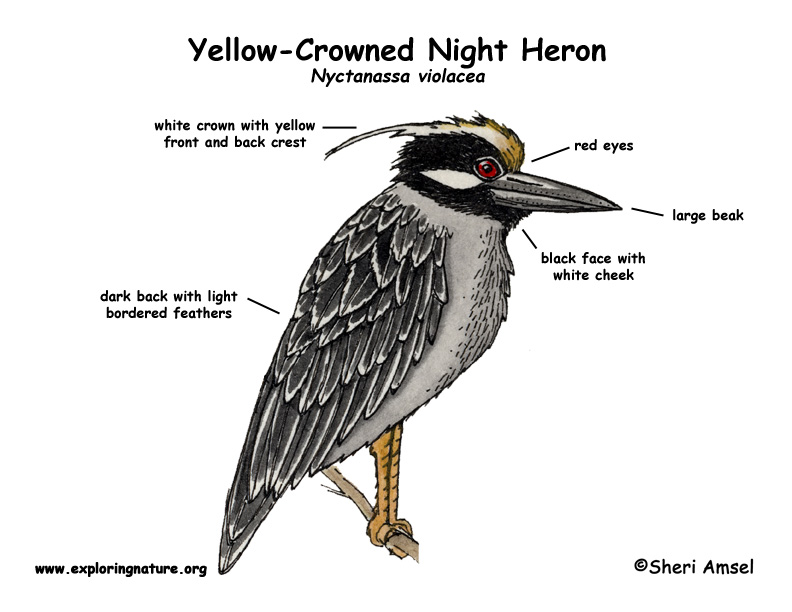

They breed across most of the U.S. and southern Canada, down to South America. They spend the winter from southern U. S. south. They are also in Europe, Asia, and Africa.
They live in marshes, swamps, by streams, lakes, and in farm fields.
They are only about 21 inches tall. They have red eyes and a white crown that is yellow toward the front. They are blue-grey over all, with the feathers on their back darker in the center with a light border. They have a black face with a white cheek patch.
They grab prey with beak, not stab it.
They eat fish, frogs, lizards, snakes, and rodents.
They build a platform nest of sticks in a tree or some cattails. They nest in groups -- sometimes many nests in the same tree. The female lays 1-7 green eggs.
Kingdom: Animalia
Phylum: Chordata
Subphylum: Vetebrata
Class: Aves
Order: Pelecaniformes
Suborder: --
Family: Ardeidae
Genus: Nyctanassa
Species: N. violacea
When you research information you must cite the reference. Citing for websites is different from citing from books, magazines and periodicals. The style of citing shown here is from the MLA Style Citations (Modern Language Association).
When citing a WEBSITE the general format is as follows.
Author Last Name, First Name(s). "Title: Subtitle of Part of Web Page, if appropriate." Title: Subtitle: Section of Page if appropriate. Sponsoring/Publishing Agency, If Given. Additional significant descriptive information. Date of Electronic Publication or other Date, such as Last Updated. Day Month Year of access < URL >.
Amsel, Sheri. "Heron (Yellow-Crowned Night)" Exploring Nature Educational Resource ©2005-2024. December 14, 2024
< http://exploringnature.org/db/view/Heron-Yellow-Crowned-Night >

